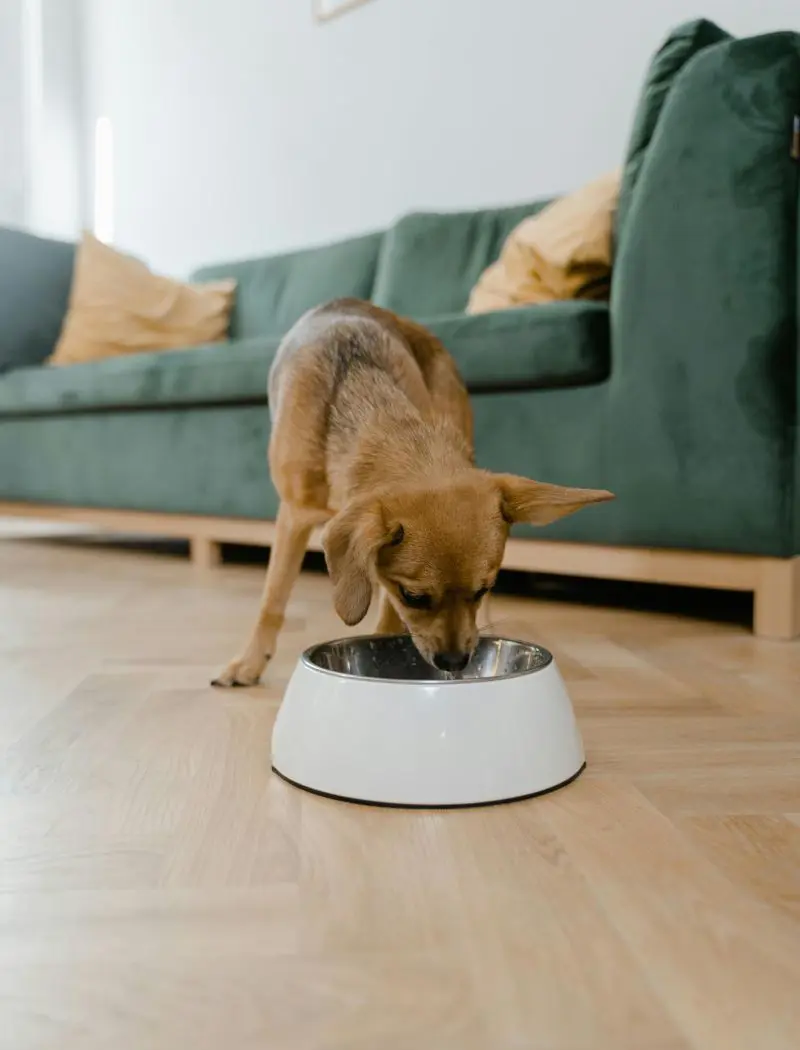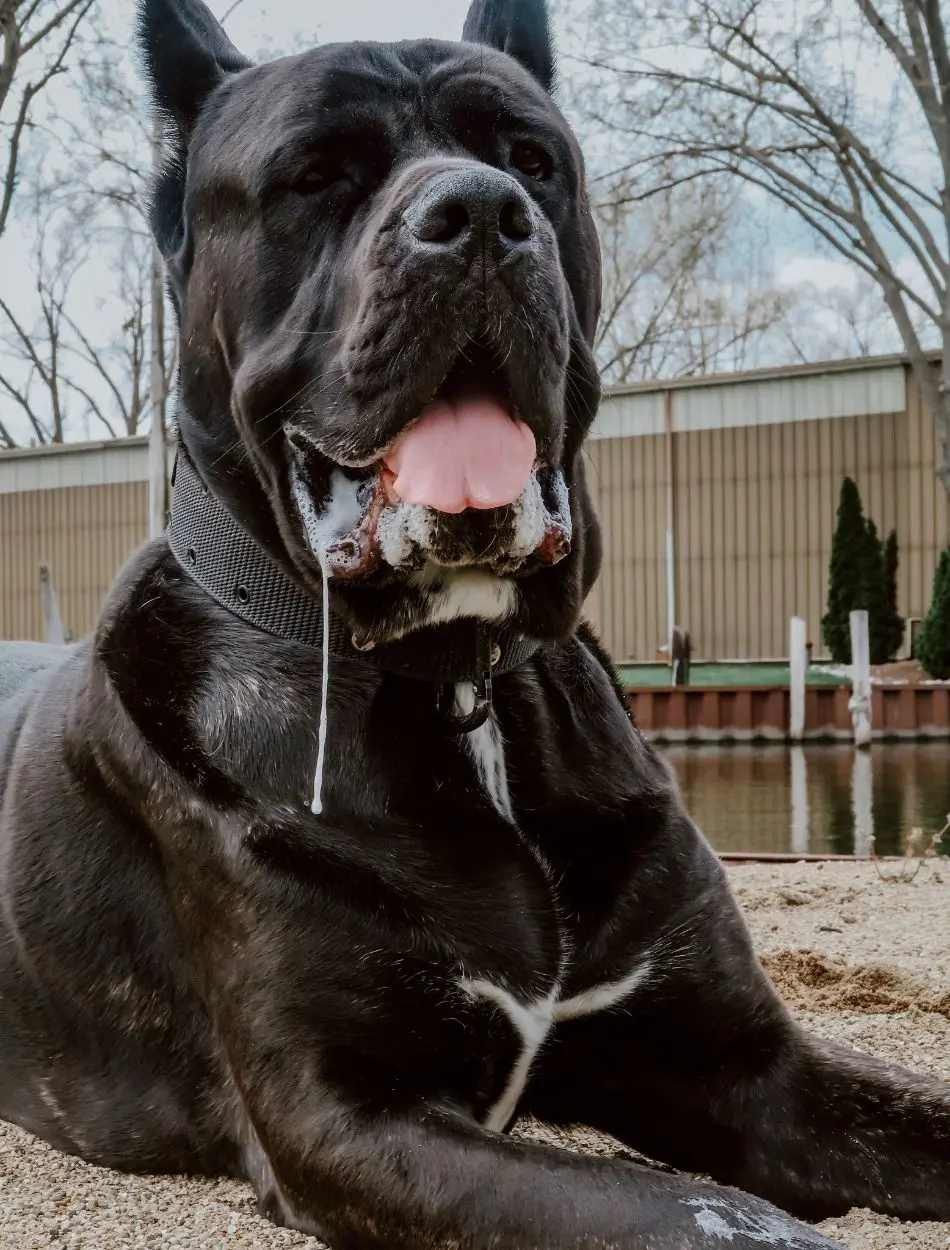20 Signs Of Allergies In Dogs
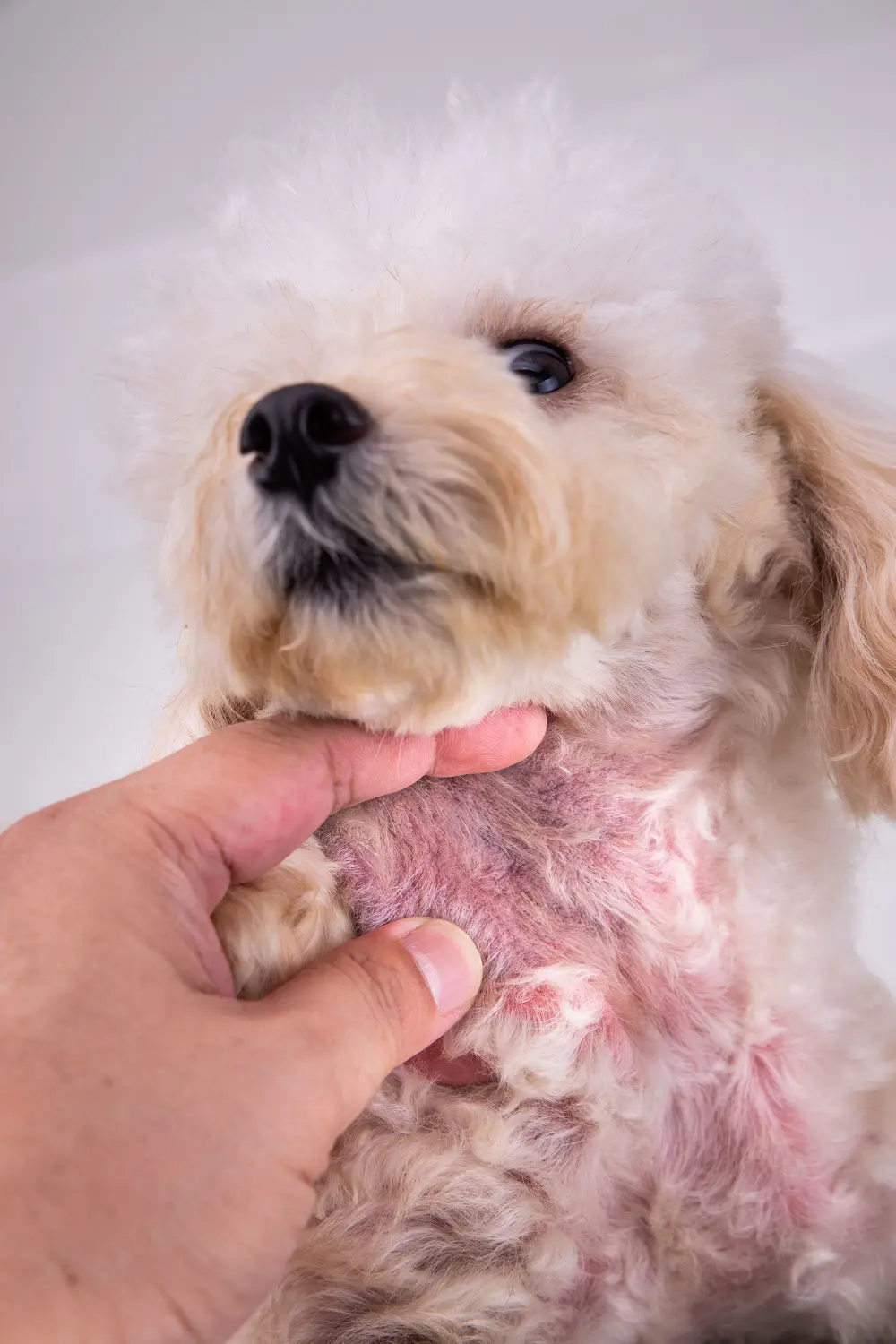
Dogs show allergies in many ways, and a dog owner should identify them to ensure their pets get the right care. Similar to human beings, dogs have different kinds of allergies; some have food, environmental, or even contact allergy issues.
Knowing the symptoms will help tell the difference between them and when to consult a vet. The following article discusses 20 signs of allergies in dogs and details how one can identify and manage them.
1. Itchy Skin
Probably the most common symptom that speaks of allergies in dogs is persistent itching. If your dog suddenly has an urge to scratch, bite, or lick excessively on any part of his body, it very well may mean that the poor fellow has an allergy.
This scratching happens mainly due to allergens such as pollen, dust mites, and some foods. This could be followed by open sores and secondhand infections that do not heal easily where there is chronic scratching. If you find your dog scratching excessively, then you will need to find the cause and treat it accordingly and go to the veterinary for more consultation.
2. Inflamed Skin
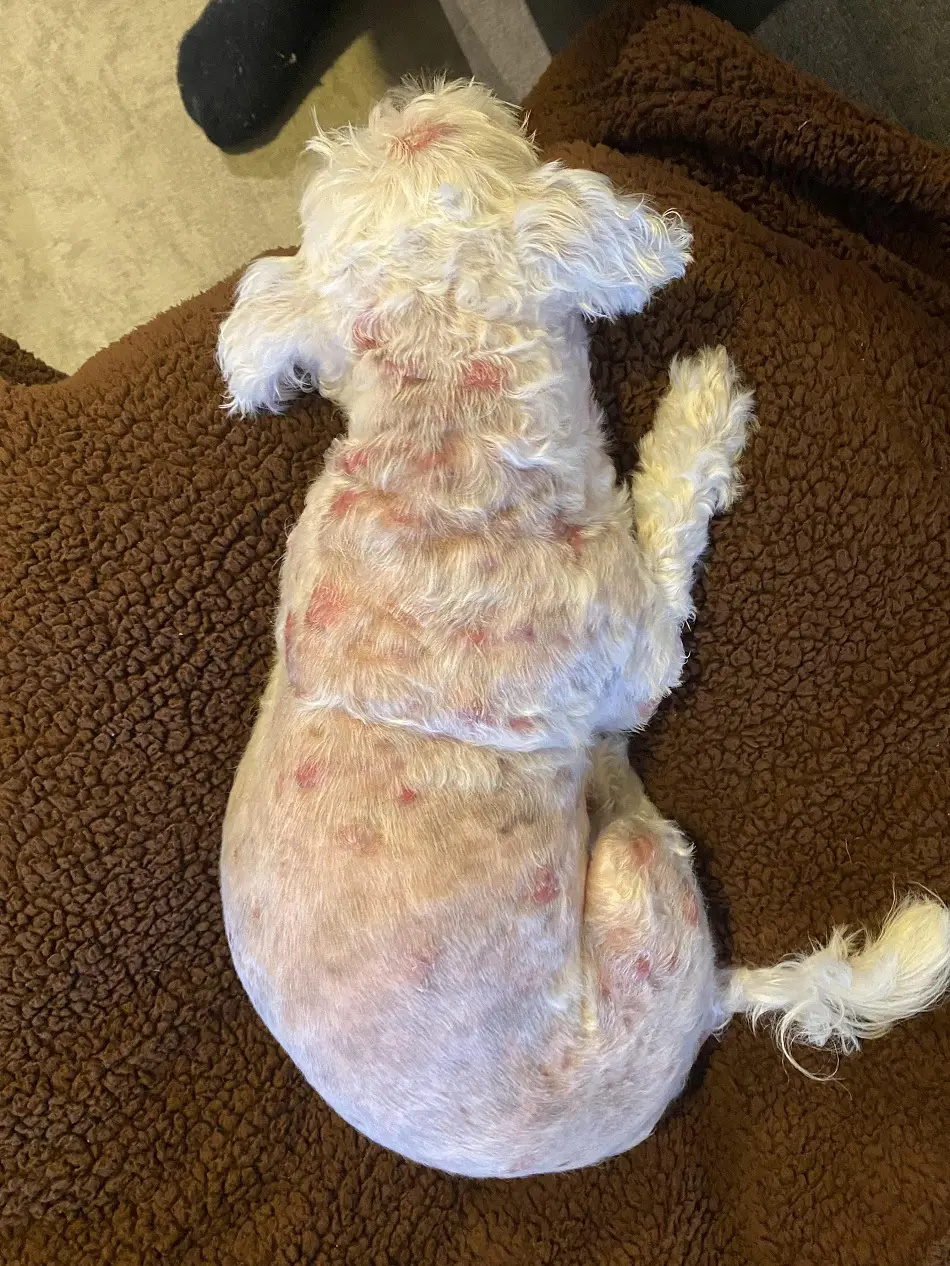
Allergic reactions may be the cause of your dog's red, inflamed skin, and this is what is known as allergic dermatitis. This is usually an adverse reaction to the most common allergens in dogs, manifested in most cases as bites from fleas, environmental pollutants, or some added ingredients in their food.
Being colored deep red and inflamed, it gives a very high degree of itchiness and is very uncomfortable for your dog; the reaction usually results in continuous scratching, which only aggravates the situation. If you notice any red, inflamed patches on your dog's skin, take him to the vet so that the allergen is found to give your poor pet some relief once and for all.
3. Hot Spots
Localized skin irritation and infection emerge rapidly in areas where dogs obsessively lick or scratch due to allergies. These hot spots can be painful and are usually red and moist, and may give off a bad odor and sometimes even need veterinary treatment to heal properly.
The condition worsens if left untreated, leading to considerable discomfort in your dog. So, it is advisable to consult with a vet. Three simple forms of hot spot management involve keeping the area clean to prevent worsening the situation, preventing further irritation to the area, and treating the underlying allergy that causes it.
4. Ear Infections
More than one recurrence of an ear infection is indicative of allergies in dogs. 'Head shaking' and 'ear scratching' accompanied by pungent, foul smells streaming from the ears may be signs of allergy.
Usually, pathogenesis is precipitated by an allergy to food and environmental factors. There can be inflammation with the ooze and redness of the ears, while they can become swollen. Thus, a clean and checked ear on your dog will not give way to infection, and if it is present in some cases, one must consult with the vet to rule out a proper diagnosis and treatment.
5. Runny Eyes
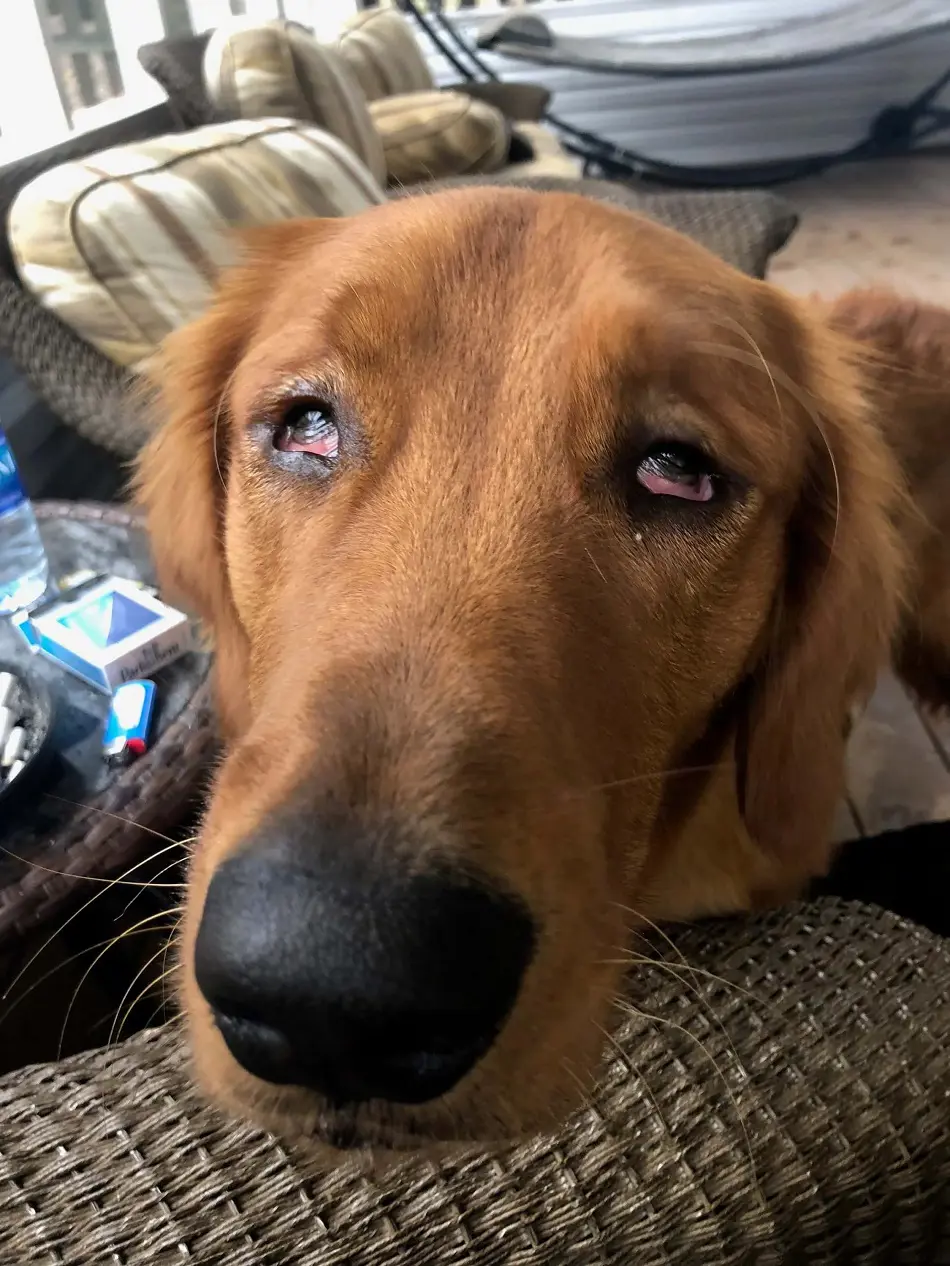
Other common symptoms of allergies in dogs are runny or watery eyes. This could be due to allergies to environmental elements such as pollen and dust. If excessive watering is in the eyes, then it's time to take your dog to the veterinarian.
Watery eyes result in irritation, which will make a dog rub its face with a paw, probably irritating itself or at times even hurting itself. This will enable the dog to get rid of these symptoms and be at ease. It is, thus, very important that the exact nature of its allergy be identified along with its management by controlling its exposure to that allergy.
6. Sneezing
Sneezing is one of the most common allergy symptoms in dogs. As in the case of humans, dogs can also be affected by allergies to airborne particles such as pollen, mold, and dust. Chances are it will be a combination, like sneezing with a runny nose or watery eyes.
If he seems to sneeze more persistently or violently than he usually does, it's still best to have him checked by a vet just in case his sneezing is caused by some allergy. These symptoms can also be alleviated by reducing the amount of allergens your dog is exposed to in the air and the cleanliness of the environment around him.
7. Coughing
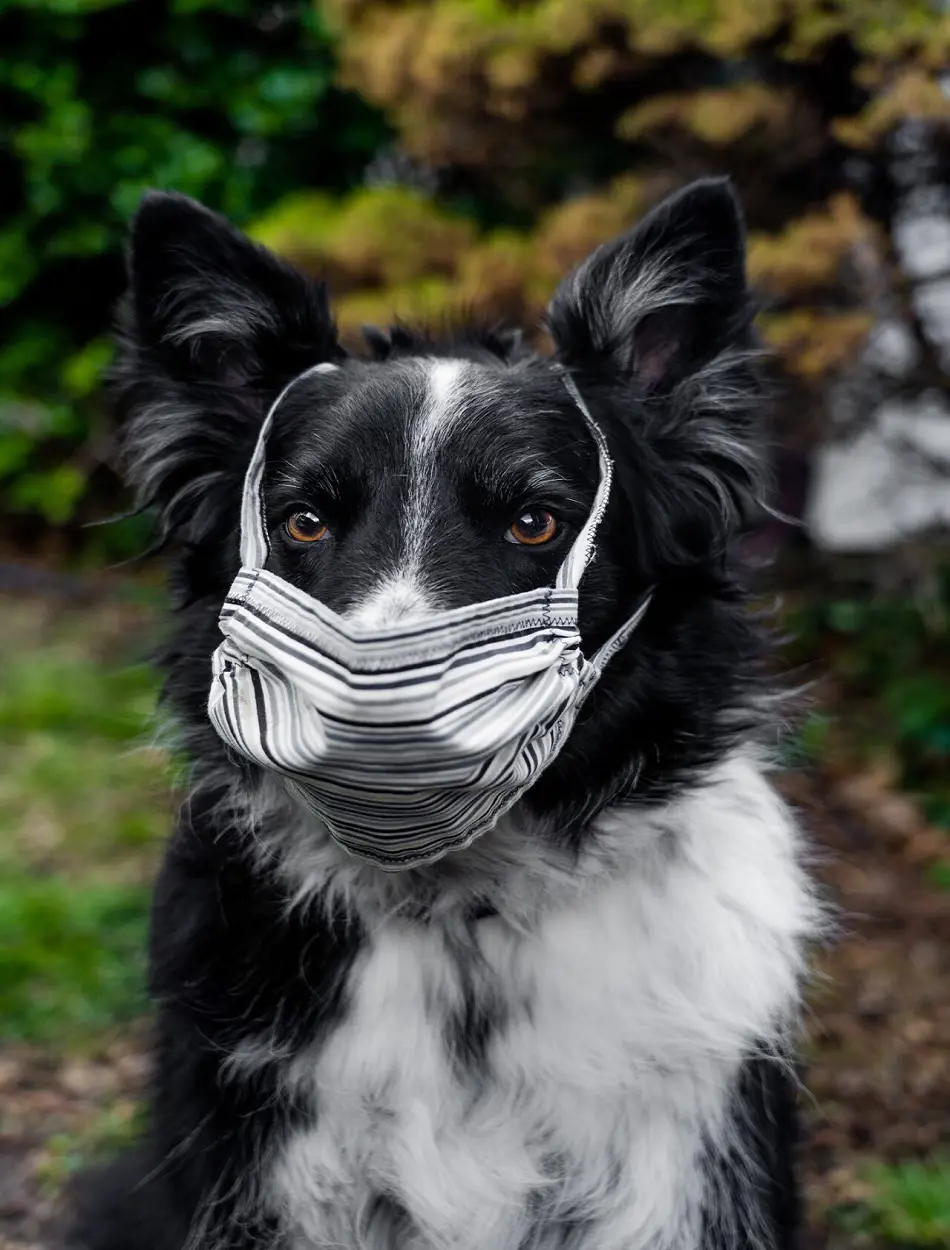
Allergies in dogs can also lead to coughing; it is mainly about what is in the environment in most cases. It can be easily misdiagnosed as a respiratory infection; hence, a proper diagnosis has to be made.
This is a dry, nonstop cough mainly caused by allergies. It may get worse in specific seasons of the year. If it seems like your dog coughs very chronically with other signs of allergy, then you will need to see a vet so that the cause can be established and further treatment done.
8. Vomiting
Food allergies can also result in stomach problems such as vomiting. If your dog vomits immediately after eating some foods, then he may be allergic to some of the ingredients being used. Allergies resulting from environmental factors are also known to cause vomiting.
Diagnosis of allergens and a change in either the type of food your dog is fed or the environment is vital because chronic vomiting can lead to dehydration and other health problems. A vet can help in detecting food allergies and advise on a proper diet to prevent further problems.
9. Diarrhea
Another gastrointestinal symptom that can be associated with food allergies is diarrhea. If the diarrhea becomes chronic, the dog should then be taken to the veterinarian to determine whether the food allergy is the cause of the symptom. Diarrhea leads to dehydration and malnutrition if not controlled.
If your dog has diarrhea only occasionally, it's a good idea to keep a food log of everything he eats, along with possible allergens, which may help document whether an allergy may be to blame for his diarrhea.
The vet may then recommend a food elimination diet to pinpoint which type of food causes this kind of reaction. They may suggest proper treatment and medications for it.
10. Swollen Paws
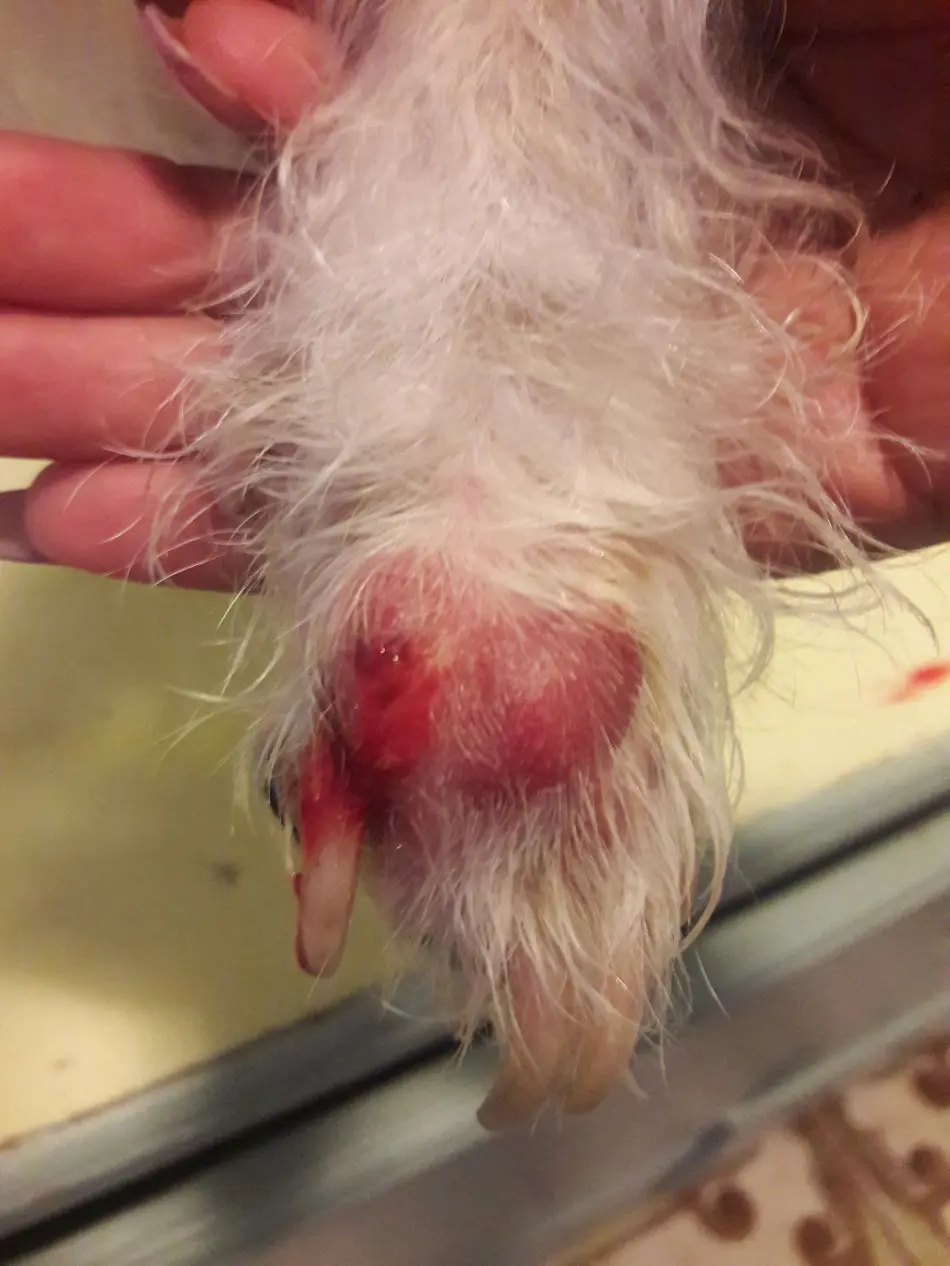
This is accompanied by allergic reactions that may swell up in the paws of your dog and render them inflamed. Understandably, he may indulge in excessive licking, which only aggravates the problem.
Swelling in paws may result from contact with any allergen, like grass, some chemicals, or even foodstuffs. Keeping the area around the paws clean and watching for redness or swelling will help keep the symptoms under control. If this persists, consult your vet for a proper diagnosis and treatment plan.
11. Hair Loss
Hair loss in canines is yet another typical manifestation of allergies. This is usually due to excessive rubbing, biting, or licking brought about by the itchiness that comes with the allergy. It will then manifest in patches and may even have some redness, sores, and other skin conditions, p.
If you have concluded that your dog is losing its hair, then there could be some underlying cause for it that might be allergy-driven. Hence, it must be attended to quickly to prevent continuous discomfort and possible secondary infections.
12. Hives
These are raised, reddened bumps on the skin and can be a telltale sign of an allergic reaction. These reactions can range from insect bites to some foods and even from contact with some allergens. Hives are in an itchy, uncomfortable state to be in for a dog, and they very often appear quite suddenly.
If your dog breaks out in hives, try to determine the allergen he has reacted to and avoid further exposure. Hives are sometimes associated with more significant findings, including swelling of the face, and breathing difficulty may ensue. One should seek medical attention immediately in this case.
13. Respiratory Distress
This can result in respiratory distress in dogs, which is an acute, probably life-threatening emergency. Clinical signs include dyspnea, wheezing, and tachypnea, which can be a result of contact with inhalant allergens like pollen or mold.
The condition may also be caused by severe reactions to food and insect stings. As you ensure that your dog gets timely treatment, he will stay clear of disastrous complications and will have a comfortable life despite his allergies.
14. Chronic Ear Scratching

Now, if your dog is constantly scratching one ear, then this could prove to be an extremely obvious sign of some allergy lurking underneath. This would mean infections if the ears are scratched chronically, and such problems go without attention.
The allergies will go as far as the ears, which are reddened, swollen, and, conversely, starting to discharge, all making the dog very uncomfortable. In attending to this symptom, regular cleaning of the ears, coupled with taking note of any bacterial infection that may affect the allergy, will soon be a new lifestyle for the animal.
15. Anal Itch
Some allergic dogs will drag their rear along the ground, trying to scratch the anal area. This could be indicative of a food allergy or, more likely, an infection from fleas. This is very uncomfortable for the animal.
This can lead to further complications by developing a secondary infection. If your dog does this frequently, then a visit has to be made to your vet to diagnose the cause for relief in the form of dietary changes or flea control measures.
16. Nasal Discharge
Another allergic condition in dogs is chronic nasal discharge. It often comes with sneezing and can even be mistaken for a cold or even pneumonia. You can notice clear or colored nasal discharge by pawing at the nose.
One way to mitigate these symptoms is by identifying the exact identity of the allergen and reducing your dog's exposure to it. Nasal discharge requires visiting the clinic if it is persistent or combined with other symptoms like excessive panting that may dismiss other health issues.
17. Paw Licking

Excessive licking of the paws is an extremely common presentation of allergies in dogs. In nearly every case, this is a reaction to itchy or irritated skin from the allergy. In very few cases does paw licking not further irritate the paws; at other times, this also leads to secondary infections.
Identification of allergens and measures to avoid exposure to the same, along with proper skin care, are necessary to reduce this behavior. Looking out for your dog's paws, which could show signs of irritation or swelling—also helps keep this symptom under control.
18. Behavioral Changes
Allergies can change behavioral performance in dogs. Ordinarily, the overactive dog becomes lethargic, and the mellow one is irritable from the irritation of it. This rise in aggression and anxiety is a behavioral change.
Noting your dog's behavior and watching for any changes in it will help point out probable allergies. In the case of huge changes in behavior, it is always good to consult with your vet about whether the change is caused by it and how to institute appropriate management strategies.
19. Loss of Appetite
Another way through which food allergies may manifest in dogs is this. If you happen to notice a sudden disinterest that your dog develops in food, then it is most likely a case of food allergy. This may lead to emaciation, among other health complications, if not checked early enough.
One can keep a food log and underline possible allergens to pinpoint the culprit. Your vet may put your dog on an elimination diet to identify which specific food your dog is reacting to and recommend another one to replace it with.
20. Ear Flapping
Allergic dogs are mainly ear flappers; they are nearly always indicative of scratching or shaking for smelly or inflamed ears. Excessive flapping of the ears, if not checked, could result in infections of the ear and any other ear problems altogether.
It thus controls the symptoms by keeping the ear clean and watching out for signs of infection. Too much flapping in the ears too often calls for a visit to the vet to determine the allergens and begin the proper treatment.
Detection of these allergic signs is thus not only important for an early diagnosis of the condition but also for the introduction of effective treatment accordingly. If you happen to notice any of the above-mentioned symptoms in your dog, then consult with your vet to find out.
Allergy Prevention in Dogs
The ways of preventing allergies in dogs are by decreasing their exposure to potential allergens and maintaining their health. Some ways to prevent allergies include:
Regular Grooming
This can help remove allergens on the dog's coat and skin by maintaining cleanliness and sanitation. Bathing your dog using hypoallergenic shampoos and frequently brushing their coat can reduce the risk of allergic reactions.
Moreover, ear cleaning, nail trimming, and the use of all-natural shampoo can help in the proper grooming of your furry friends. This helps to prevent the spread of allergies in your dog's body.
Balanced Diet
The dog should be fed a balanced and healthy diet to develop its immune system. If a dog is in good health with an appropriate diet, the chances of allergy attacks will be reduced.
You can also exclude common allergens from your dogs, add appealing food to the plates, and take veterinary inputs to maintain a balanced diet for your furry friends. This helps to prevent allergies in dogs.
Flea Control
By preventing flea bites, using modern oral or topical medications, maintaining environmental control of surroundings, and seeking help from a vet regarding flea control for your four-legged friends. This may help to prevent problems.
Flea preventatives avoid flea allergy dermatitis. Regular flea treatment of your dog and its surroundings will reduce the risk of allergic reactions.
Clean Environment
A clean environment around where the dog lives decreases their exposure to dust and mold, hence lowering the risk of environmental allergy. Keeping your house clean through regular cleaning and mounting air purifiers will help reduce their presence.
Through such an understanding of the types of allergies in dogs, together with their signs and effective ways of prevention and treatment strategies, a dog owner will greatly improve the quality of life for their pets. This means that it would keep your routine checkups with a veterinarian, together with proactive approaches toward the management of allergies, to keep your dogs healthy, happy, and comfortable.
Recent posts
Dogs
Why Is My Dog Panting? 18 Reasons For Breathing Fast
Dog owners, those in tune with their pets, can often notice a change in their companion’s behavior. When unwell or scared, some dogs hide while others seek solitude. Similarly, panting is a normal sign of tiredness or lethargy, but can also imp...
10 Reasons Behind Dogs Chewing And Licking Their Paws
Some of the most harmless behaviors dogs depict are chewing on their paws. But if this obsession catches onto your pup, well, that raises a couple of curious eyebrows. Your dog's tendency towards chewing and licking can affect general health and well...
18 Reasons Why Your Dog Is Not Eating
A skipped meal here or there is normal, but your dog consistently refusing food is the cause of concern. The reasons range from dietary issues to more serious health conditions and behavioral issues. The dog may be a picky eater or there might be som...
17 Causes Of Seizures In Dogs
Don't dismiss your pet dog's uncontrolled twitching movements as harmless shivering - you may be bearing witness to the classic signs of a seizure. These sudden and involuntary electrical disturbances can drastically impact a dog's health and even ch...
18 Reasons Why Your Dog Is Drooling So Much
While drooling in dogs is perfectly normal in certain situations, excessive or continued drooling may hint at a more serious issue that requires attention. Once you know the probable causes of this drooling in your dog, you can take some necessary st...
18 Reasons On Why Is My Dog Limping
A dog limping can be a cause of concern and cause stress to owners. It is not normal dog behavior and can be a sign of health problems in dogs. Understanding why your dog is limping is important to cure this problem. This article discusses 18 reasons...


